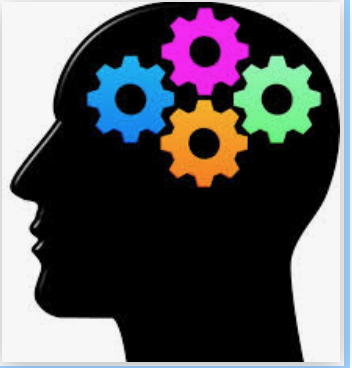Dual Differentiation
| Site: | Colorado Education Learning Management System |
| Course: | 2e (Open Access) Supporting Twice Exceptional Learners |
| Book: | Dual Differentiation |
| Printed by: | Guest user |
| Date: | Tuesday, 16 December 2025, 9:35 PM |
Description
We will go into some strategies specific to nurturing their giftedness and some big ideas around supporting their disabilities (more on that in part 2 of the course). A crucial concept, however, is "dual differentiation" which is discussed below.
Dual Differentiation
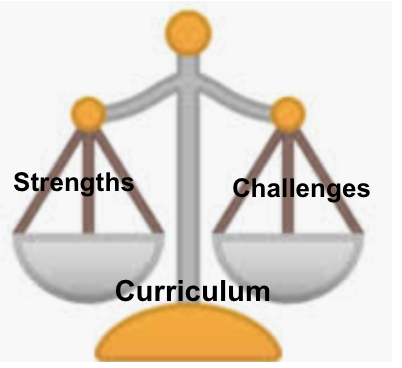
Dual differentiation refers to meeting the needs of students who exhibit two contradictory sets of learning characteristics by creating a balance between nurturing strengths and accommodating or offering other supports for learning deficits. As we structure these balanced learning experiences, we must remember the complexity of 2e students and consider their unique mix of advanced abilities and academic limitations.
DUAL DIFFERENTIATION IS PARALLEL, NOT INTERSECTING, SUPPORT


This concept of dual differentiation relates to what you learned about strength-based programming: we don't use strengths as a carrot while working on challenges; instead we prioritize nurturing strengths through rigorous curriculum and instruction while providing support for students' challenges that result from their disabilities. Research supports this approach--2e students thrive in a learning environment where their giftedness is recognized and nurtured first, not their disability. As national expert on twice-exceptional students, Susan Baum, has repeatedly said, 2e children aren’t broken; they just need support while also having their strengths developed.
Why Dual Differentiation?
-
Remediation techniques often lack the very characteristics gifted students require for successful learning (such as a faster learning pace and higher-order thinking tasks).
-
Curriculum is often a secret language arts lesson. Emphasis on basic skills in reading, writing, and math are applied to all content areas such as science.
-
First-hand inquiry is exception, not the rule, when programming for disabilities.
-
2e students need opportunities to interact with peers with similar strengths and interests
Fundamentals of Differentiation
Finally, whether we are differentiating for the strengths or challenges of our 2e learners, it is important to keep in mind the fundamentals of differentiation for our gifted learners for both their strengths and challenges.
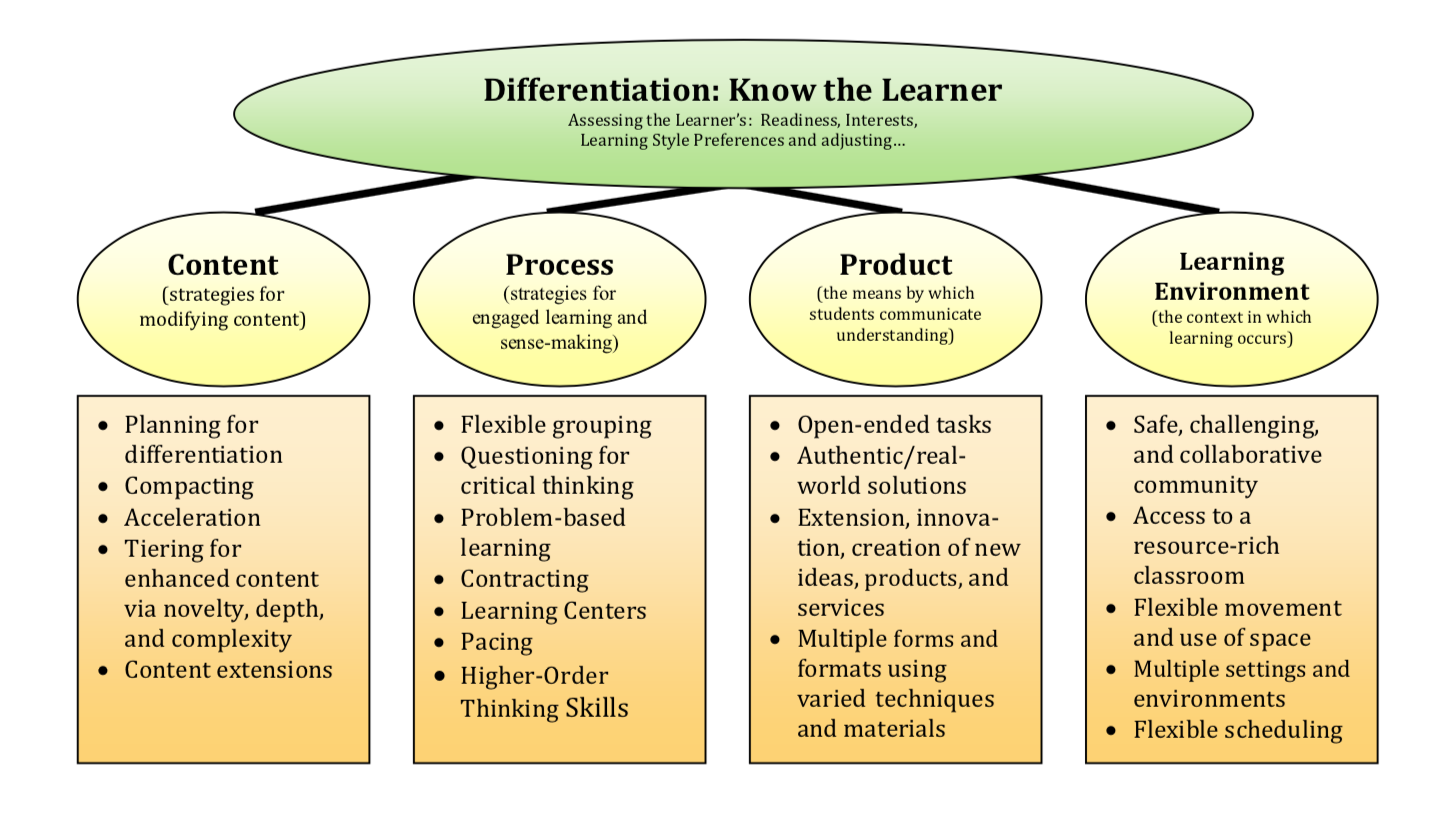
Carol Ann Tomlinson created this chart on differentiation illustrates the process of differentiation. This chart applies to all students, and plays a particular role for our 2e learners--they need differentiation to thrive. Not only are content, process, and product important to the student--affect and learning environment are also key components.
It is also important to remember that brain research shows that to really learn and grow, the brain needs rigor, relevance, and relationships. As Eric Jensen says: “If the brain’s not buying; the brain’s not changing.” (For more brain-based educational ideas, see Jensen's website HERE.)
Dual Differentiation for 2e Students
As you nurture strengths, remember our 2e students are gifted students with learning disabilities, and they will exhibit some of the characteristics of gifted students while having their success impeded by some of the commonly reported problems of students with learning disabilities:
We must not let concern for the disability lead us to remediate without first focusing on their giftedness or push us to use remediation techniques that are not suited to what gifted learners need.
The key is to use instructional strategies that accommodate both sets of characteristics to create the appropriate balance between attention to strengths and compensating for weaknesses, and then to infuse these strategies into an authentic, challenging curriculum.
The following table highlights characteristics of gifted students, and problems associated with students who have special needs, and offers some accommodations to consider for 2e students.
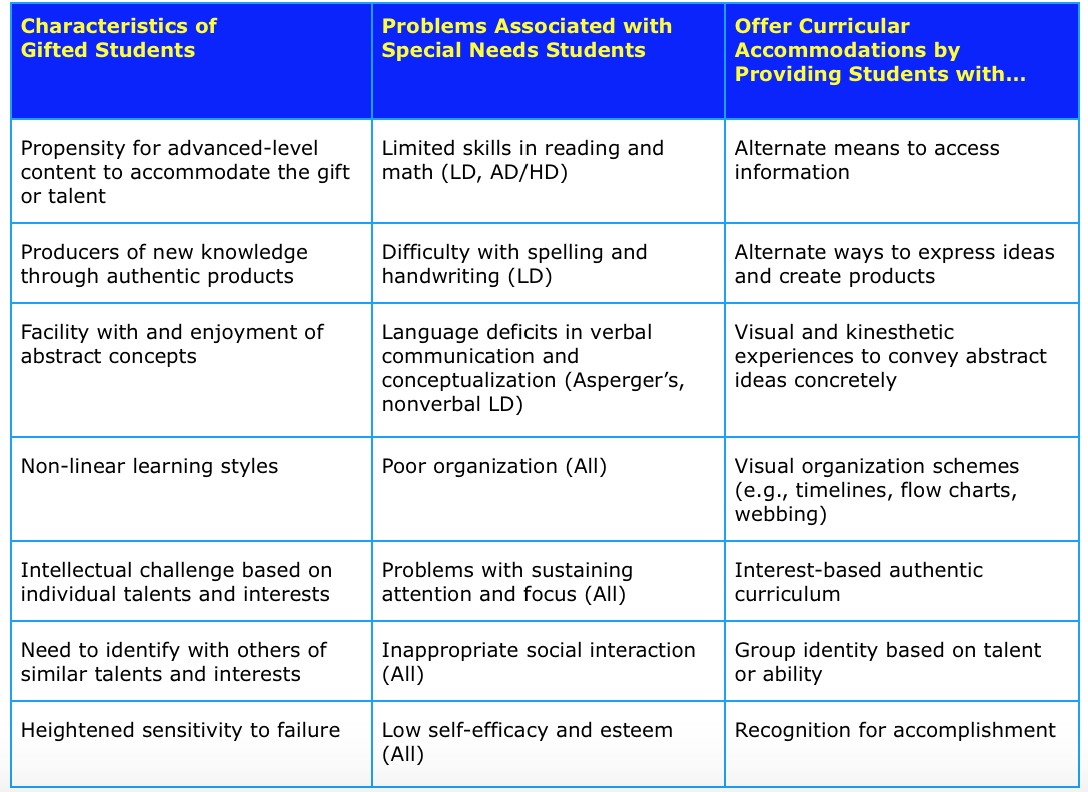
(Susan Baum has published this chart in multiple sources in multiple sites. For the latest publication see p. 186 in her 2017 book, To Be Gifted and Learning Disabled, )
Some Strategies and Accomodations for Dual Differentiation
Understanding the concept of dual differentiation, we know that 2e students first need their strengths recognized and nurtured with the same rigor that other gifted students need, but we must also support their disabilities or challenges. As much as we can, we should also take a strengths-based approach to accommodations.
The CDE Twice-Exceptional Level 1 Handbook (pages 41-47) has several one-page fact sheets on how to incorporate strength/interest based accommodations in many areas. Take a few minutes to look over the examples below and decide how you will "store" this resource for later use. In the past, participants have created multilevel folders either as bookmarks or in Google Drive. Other participants have used apps such as LiveBinder to store links, or even just a word document with a little information about how they could use the resource.
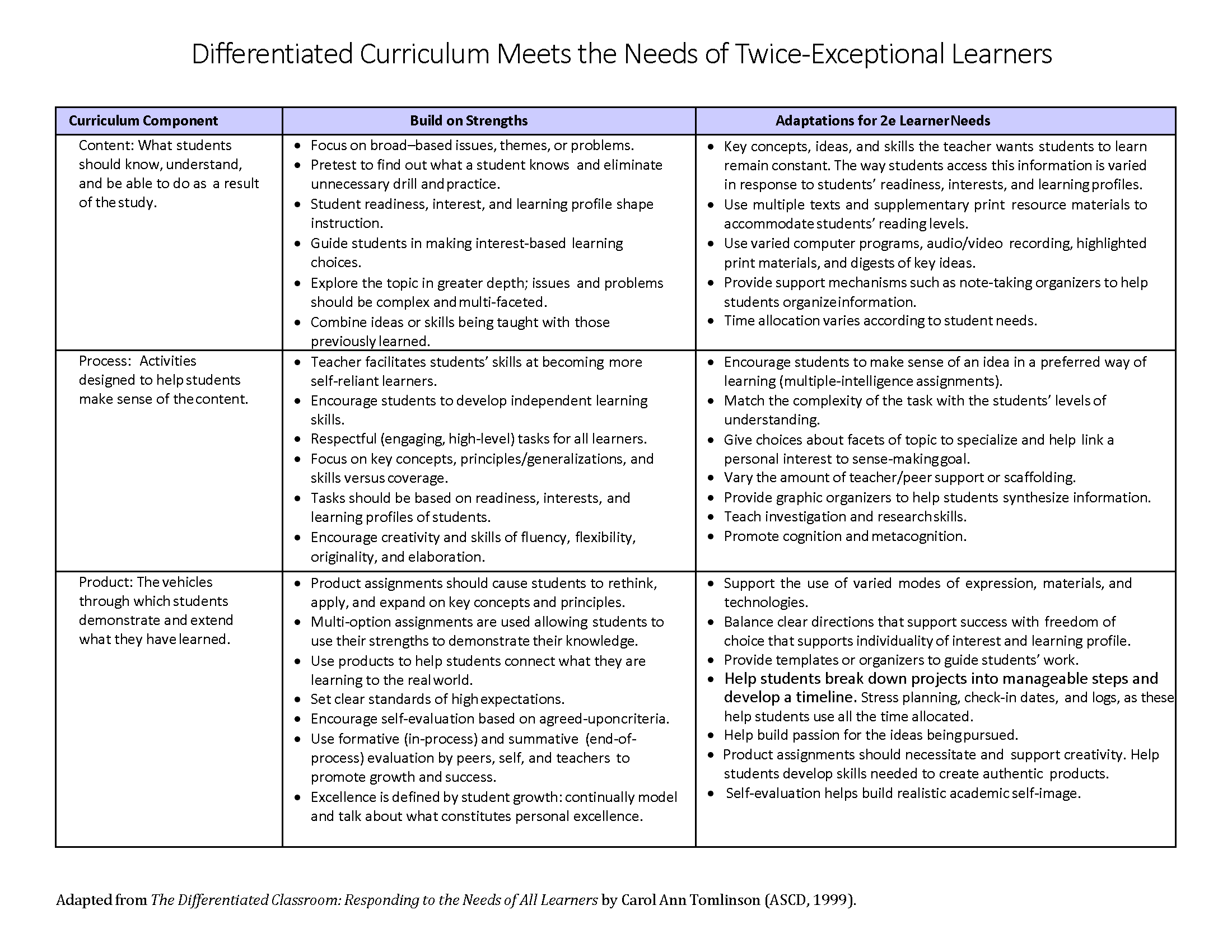
Below are some pictures from tables you can find in the Google folder. You don't need to read through these for this course, but you'll want to have them to refer to as needed. Please go to THIS FOLDER for readable copies.
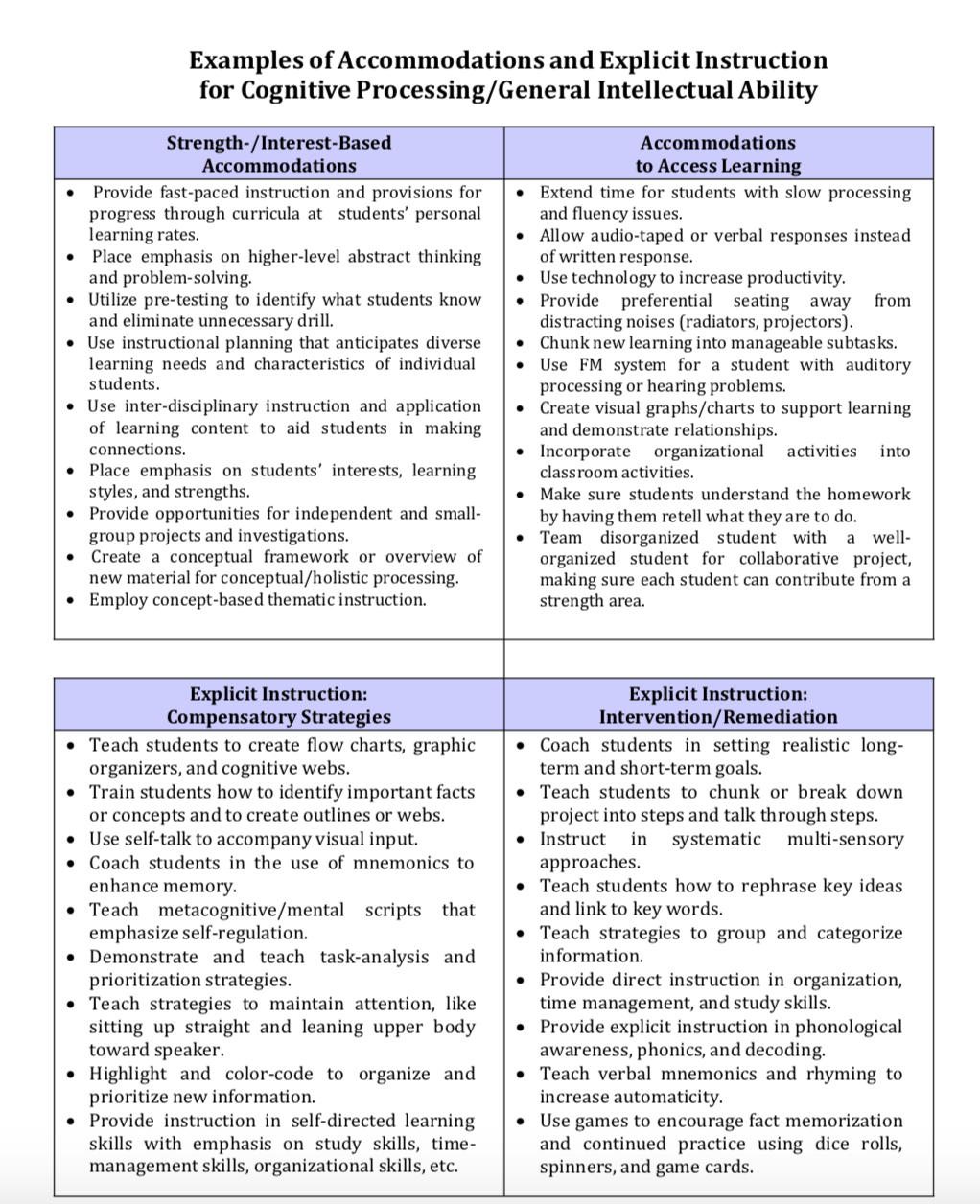
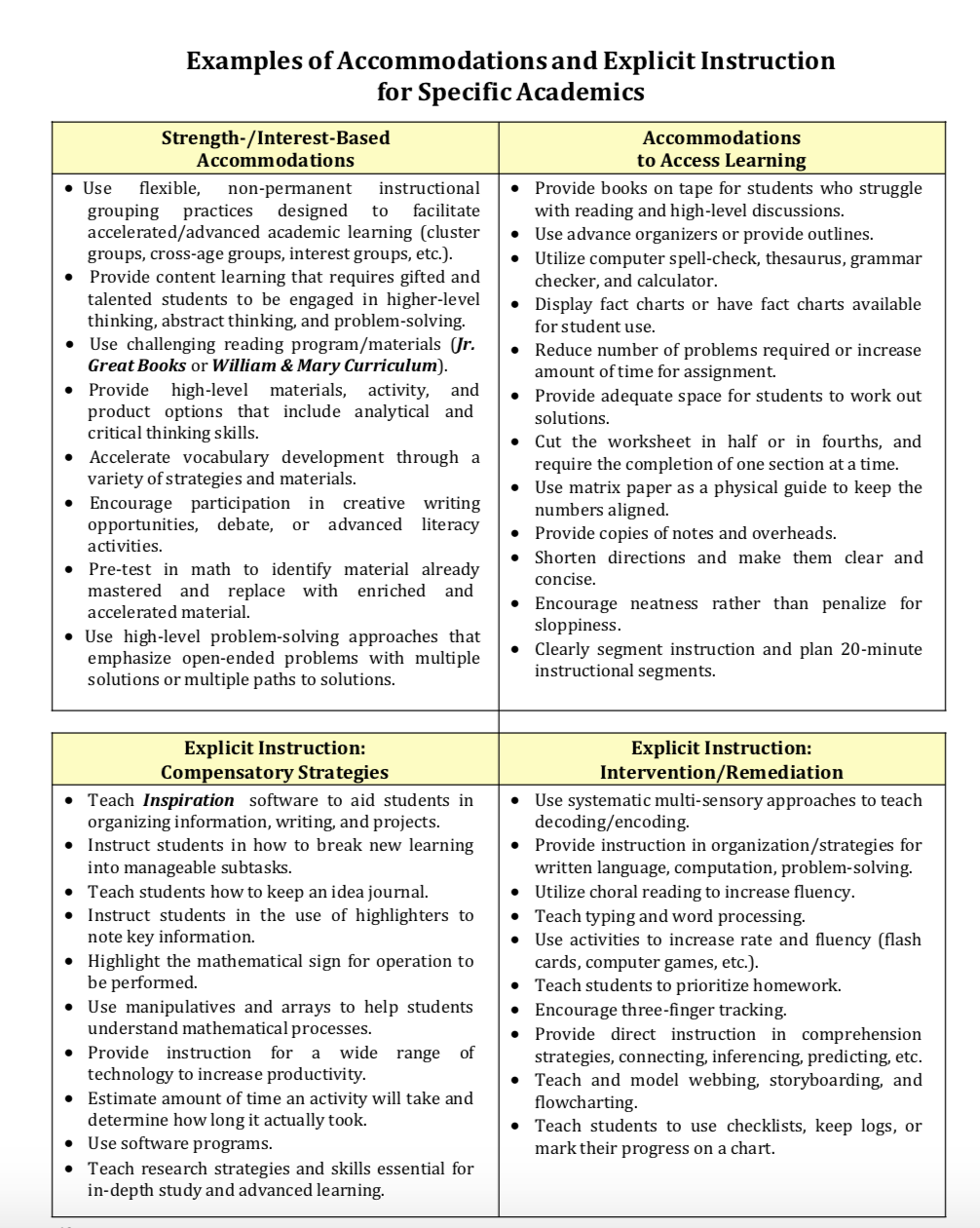
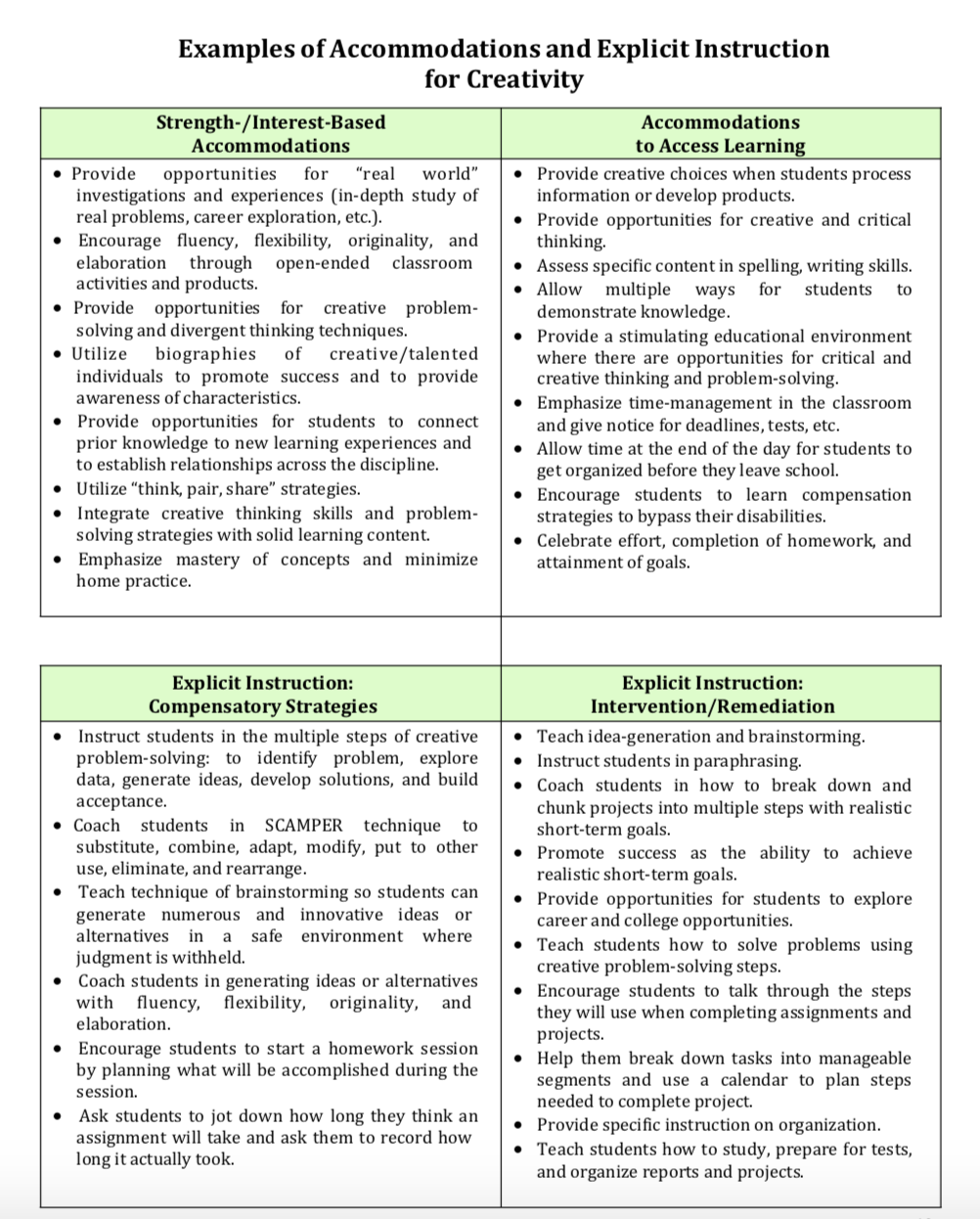
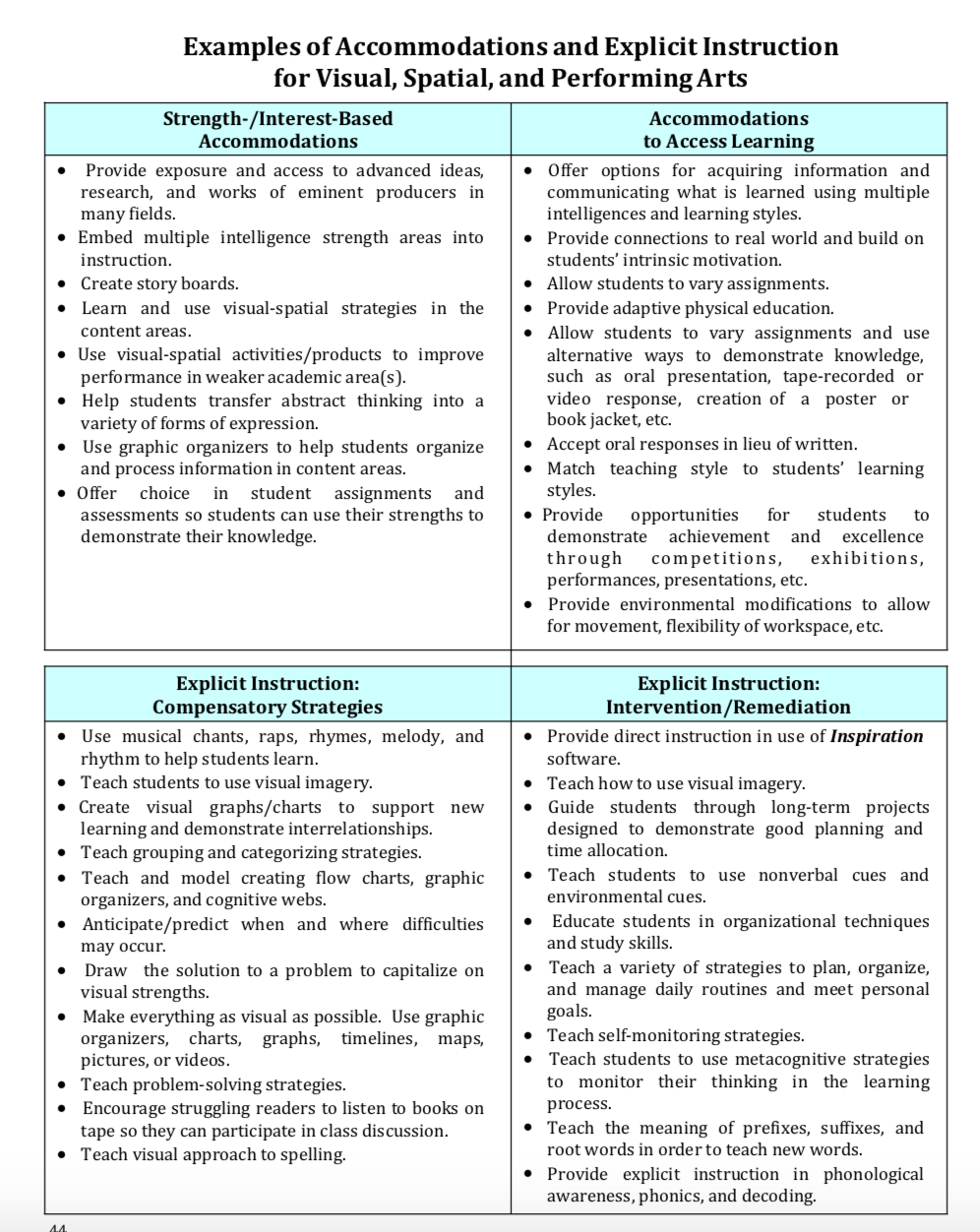

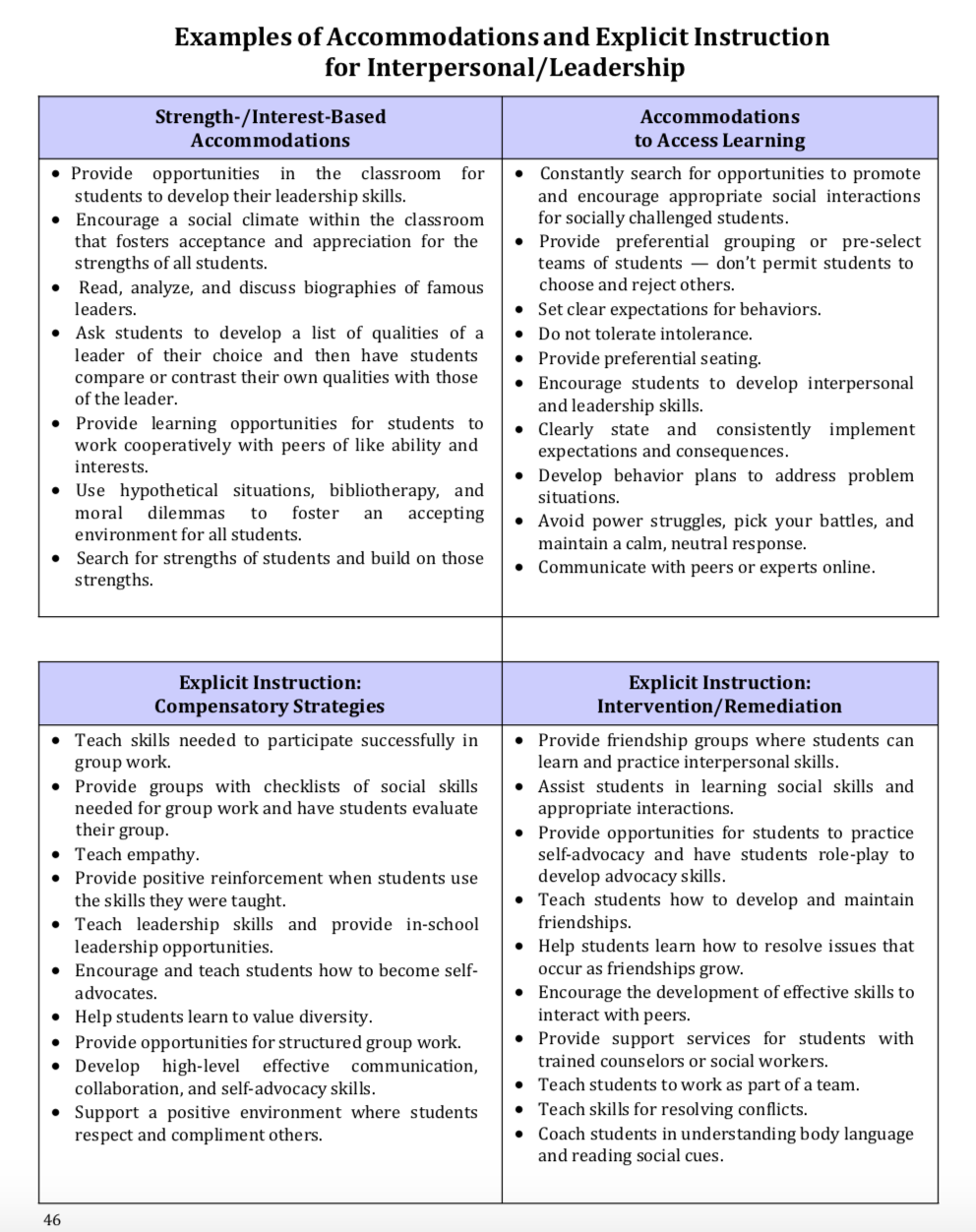
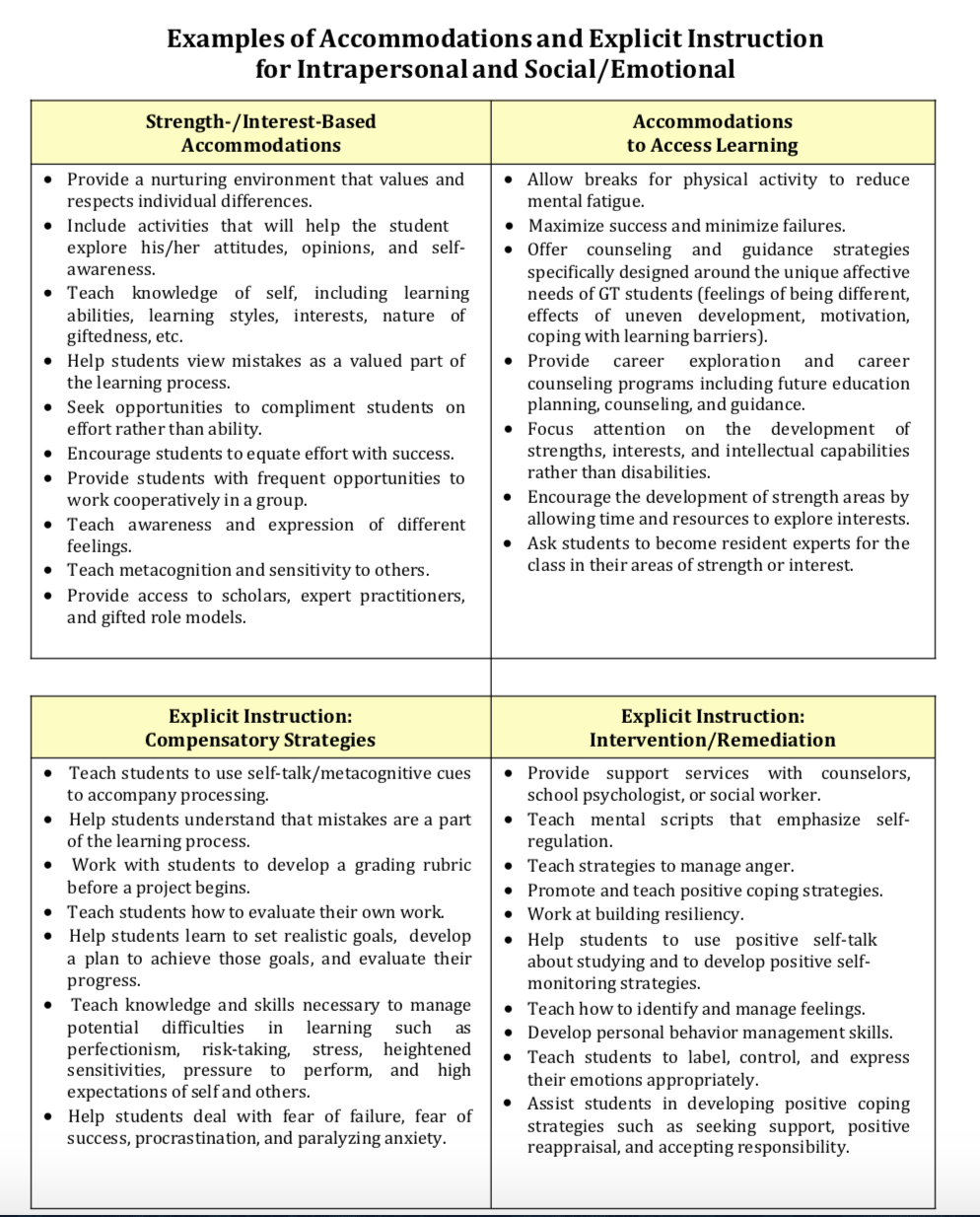
Concurrent Enrollment
For 2e learners in high school, concurrent enrollment is often a great option. According to Colorado Department of Education's Annual Report on Concurrent Enrollment, this program shows that concurrent enrollment strongly supports postsecondary and workforce readiness. It may also be exactly what some of our 2e learners need.- Over 50,000 students participated in some type of dual enrollment in the 2018-19 school year, representing an increase of 9.2% from the previous school year. African American (15%), Hispanic (12.1%), and Asian (11.3%) student participation grew at a higher rate than the state average.
- Out of the 293,820 total credit hours attempted, high school students passed 94% of the college courses.
- 3,116 students earned some type of postsecondary credential in 2018-19 while still in high school. A total of 519 students earned an Associate of Applied Science, an Associate of General Studies, or an Associate degree. One student even earned a Bachelor’s degree while still in high school!
- 77% of high school students who took at least one concurrent enrollment course matriculated to college in the semester immediately following high school graduation vs. 52% of students who had not attempted a concurrent enrollment course.
- Students who took concurrent enrollment courses earned two- and four-year degrees on time at much higher rates than those students who did not attempt concurrent enrollment.
- Through Concurrent Enrollment or ASCENT programs, 3,116 students earned some type of postsecondary credential in 2018-19 while still in high school.
